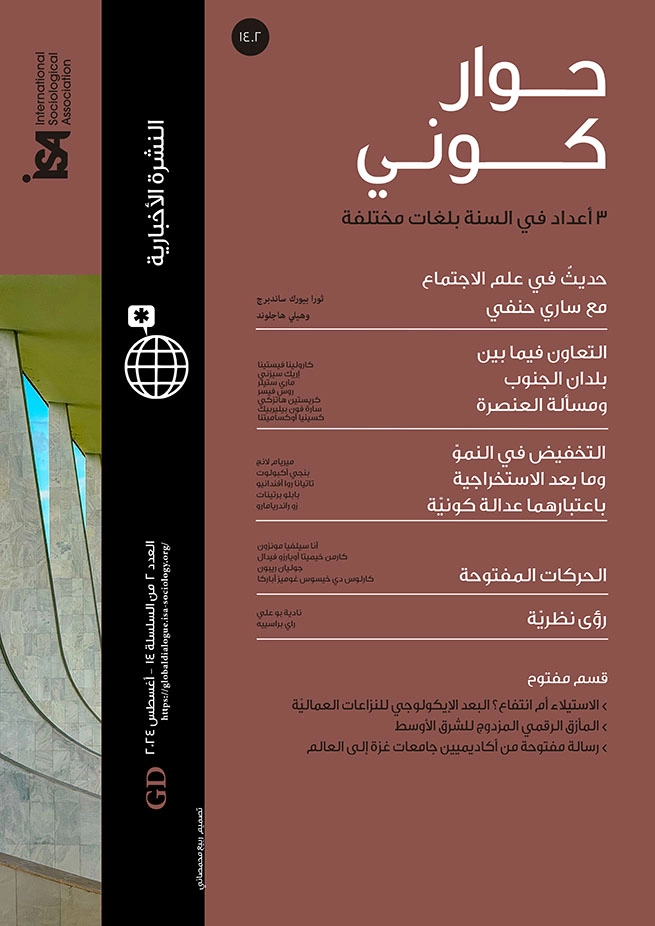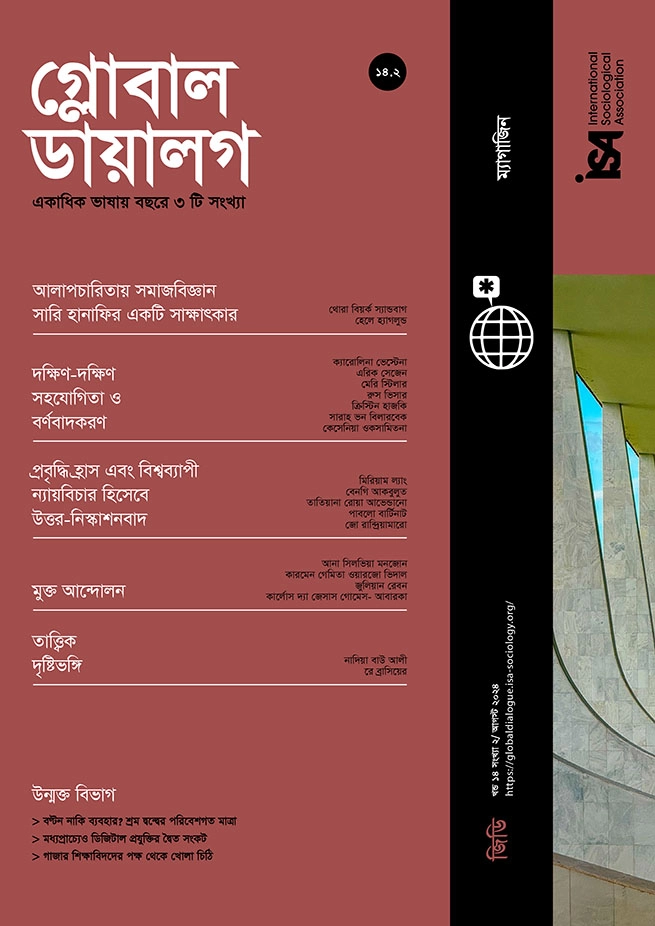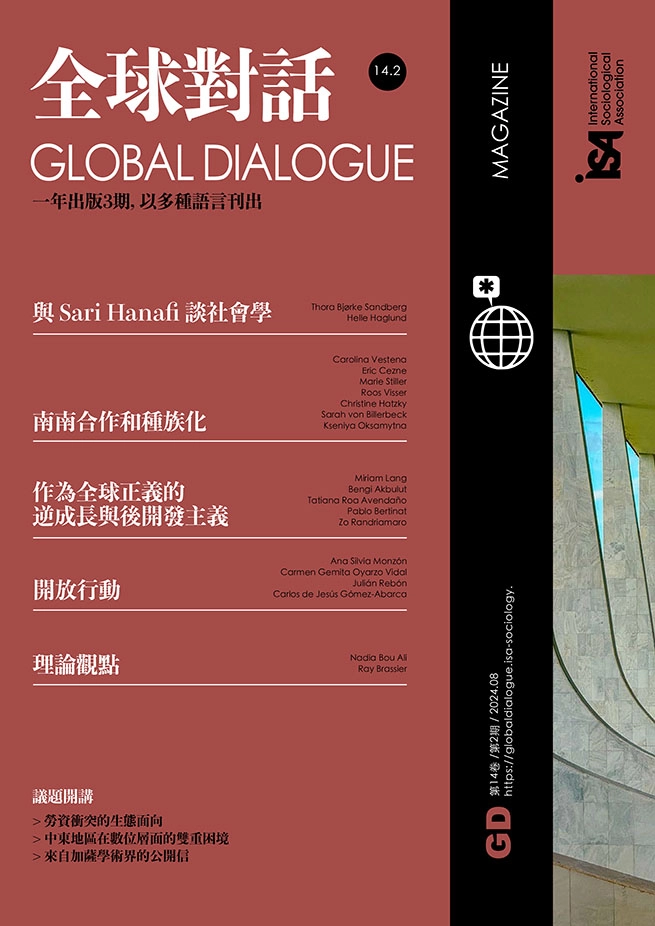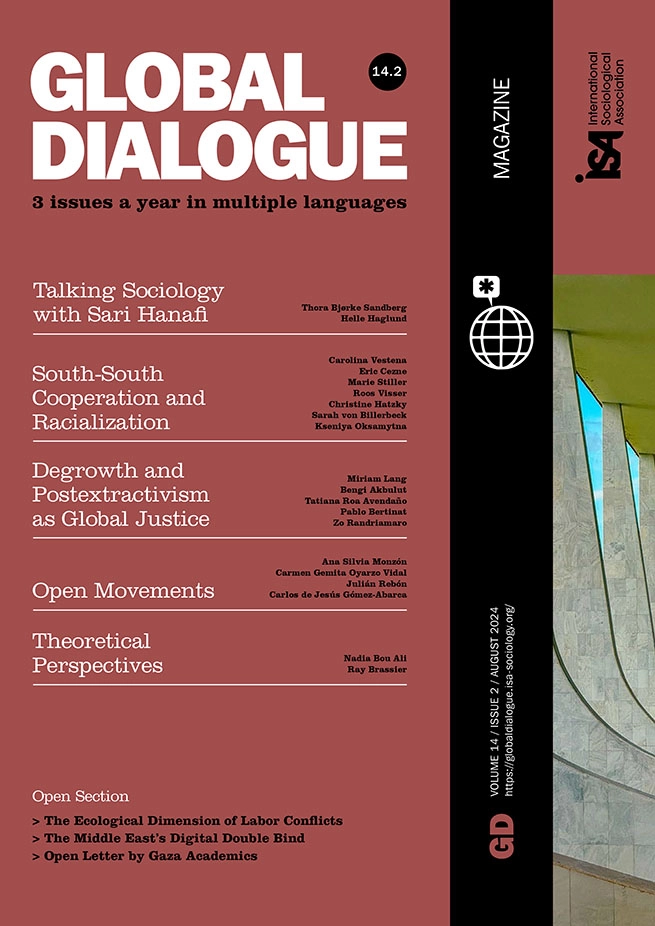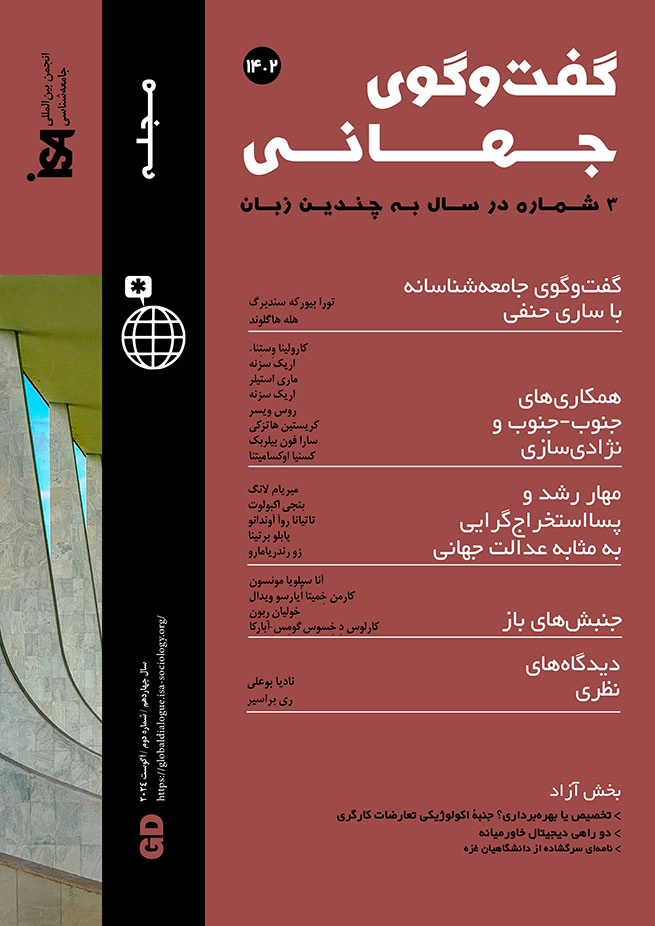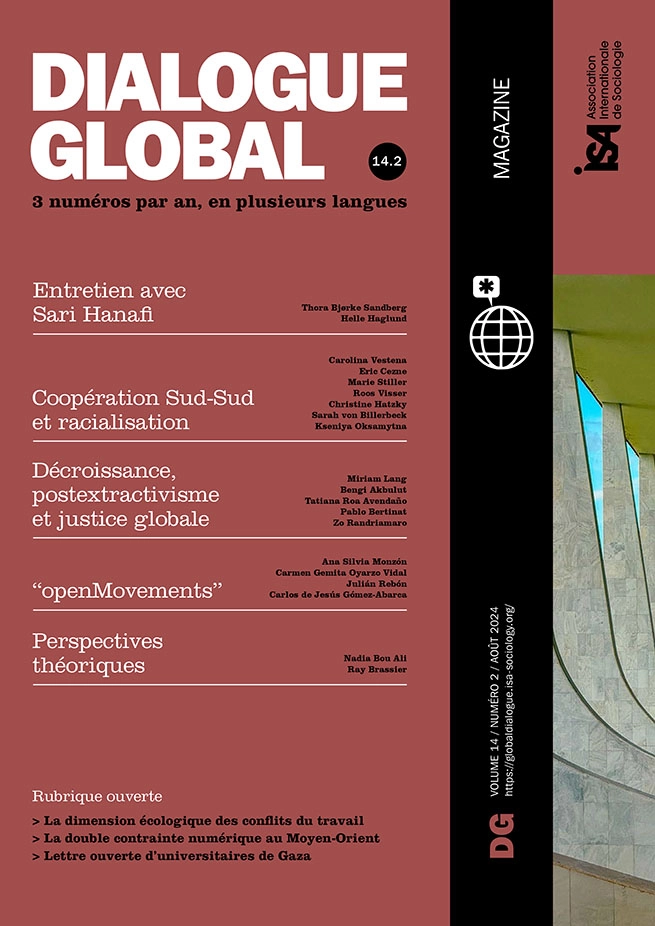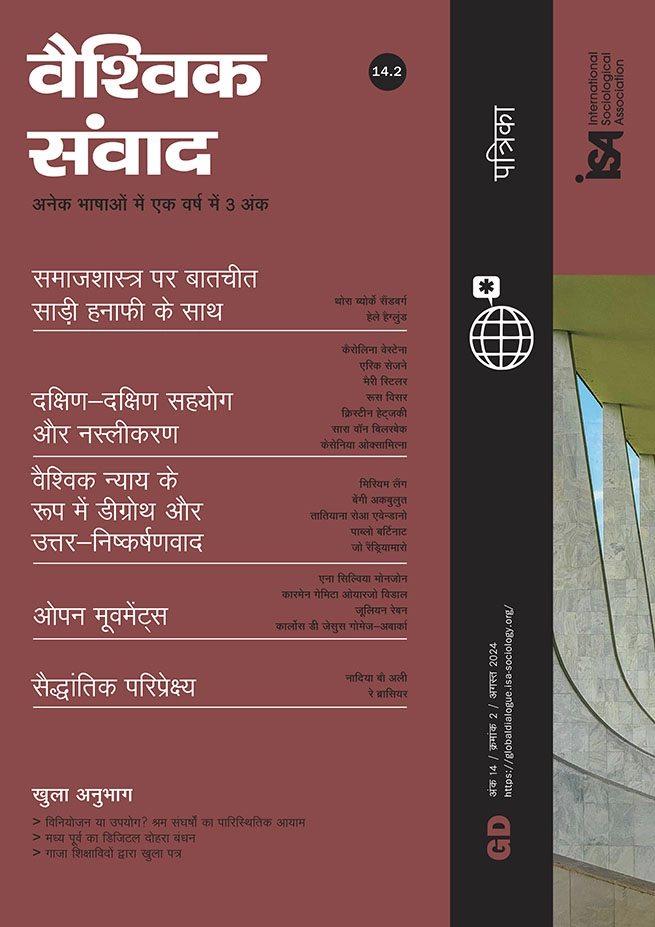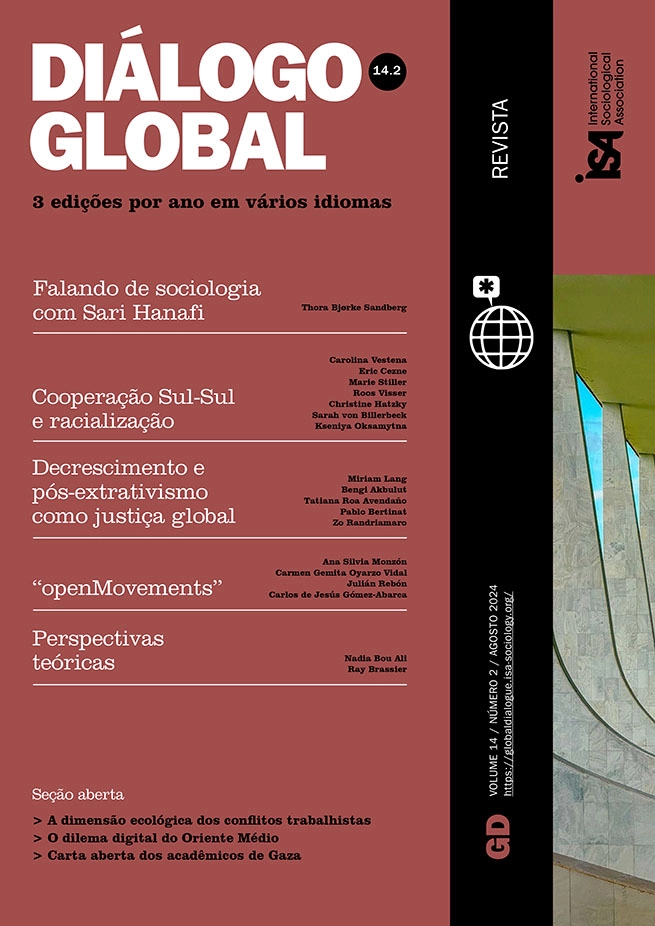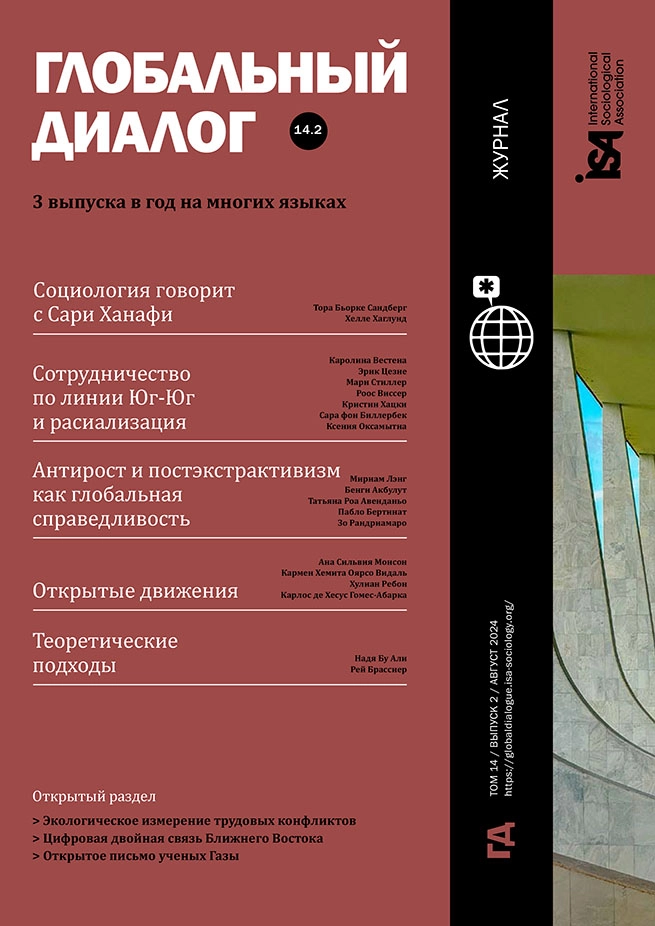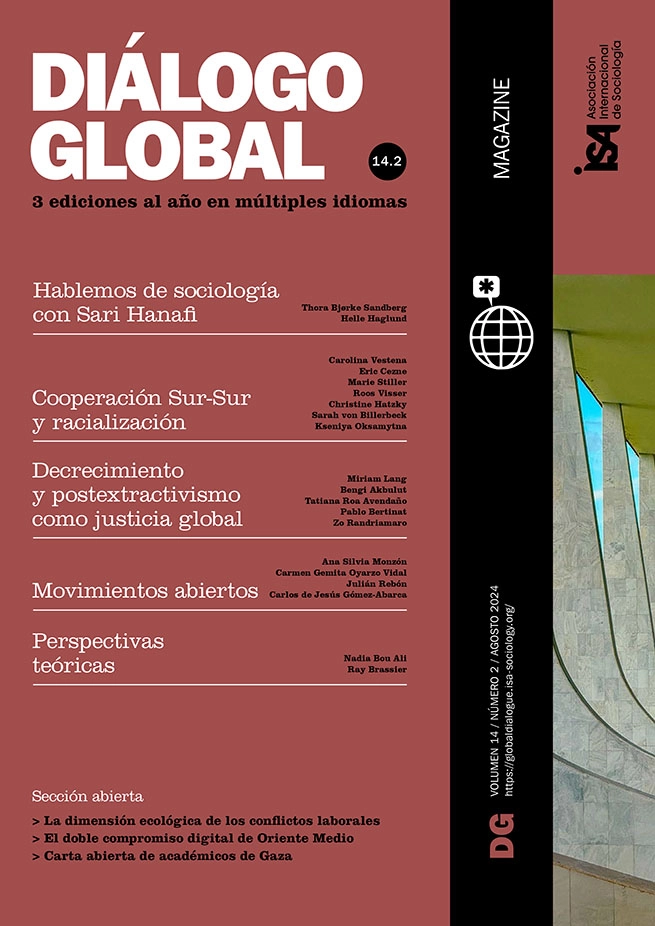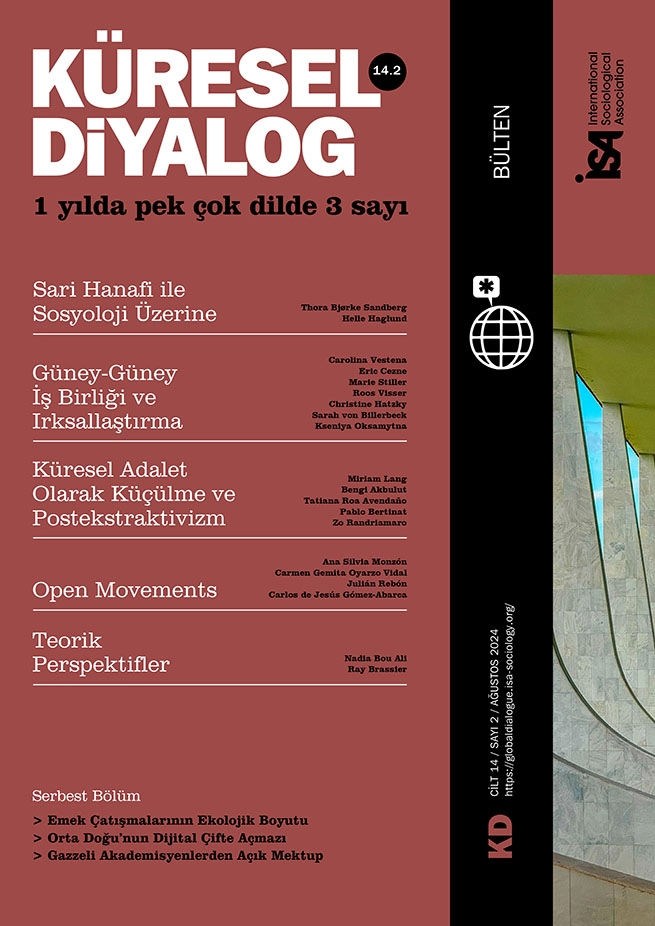Surplus and Displacement, Refugees and Migrants
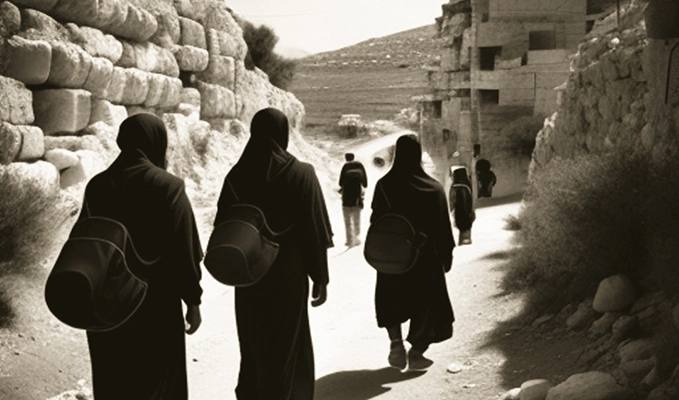
July 15, 2024
This article seeks to elaborate on the notion of “surplus population” as a characterization of unemployed masses. This includes masses in precarious labor excluded from the formal wage relation and masses of people who, due to capitalist immiseration, are only visible under general categories (refugees, migrants). The general categories of refugees and migrants are abstract descriptive categories which require a concrete analytic account of “surplus populations” within the differential dynamic of global capitalism.
Capitalism is uneven in its original form of constitution; primitive accumulation is originary insofar as it is constantly reproduced with the production of surplus value. That said, the colonial impulse is fundamental to capitalism, which is both a social relation and an ecological one. On the one hand, the “capitalocene” is characterized by the expendability of human life and of nature. On the other, the category of “demographic dispossession” describes how this unevenness is experienced, in particular and universally, by masses of people whose exclusion from the formal wage relation is fundamental for the generation of surplus value.
Surplus population as proletarianization
One major misconception needs to be addressed from the outset. Surplus populations are not by definition displaced: they need not be populations from outside the boundaries of a given country or nation state. They are not simply a consequence of uneven development but rather the effect that becomes a cause in the process of capitalist accumulation. Marx has a pointed critique of the crude Malthusian logic that sees overpopulation as a law of nature and thereby justifies the expendability of some populations for the survival of others. Today, we hear outbursts of Malthusianism in the logic of those who seek to immunize national borders against influxes of surplus populations and those who seek to exterminate or transfer expendable populations. Ongoing environmental collapse adds layers of complications to the question of surplus humanity and will be addressed in a later section dealing with capitalist ecologies. In Marx’s analysis, it is not the Malthusian logic of supply and demand that generates surplus populations but the logic of valorization, or of maximizing of surplus value as such:
“It is capitalist accumulation itself that constantly produces, and produces indeed in direct relation with its own energy and extent, a relatively redundant working population, i.e. a population which is superfluous to capital’s average requirements for its own valorization, and is therefore a surplus population [...] This is a law of population peculiar to the capitalist mode of production; and in fact every particular historical mode of production has its own special laws of population, which are historically valid within that particular sphere.” (Capital, 782–784)
There is a law of population peculiar to capitalism: the development of productive forces necessarily results in relative surplus populations. The “law of supply and demand of labor” regulates the ratio of general wages (of the working class, i.e., labor power) to total social capital: “The higher the productivity of labour, the greater is the pressure of the workers on the means of employment, the more precarious therefore becomes the condition for their own existence” (ibid., 798, emphasis added). Likewise, “machinery produces a surplus working population” (ibid., 531–532). In this context, it is the wage relation itself that results in the immiseration and proletarianization of the working class.
This would entail that relative surplus populations become at once a cause and effect of the development of productive forces as a tendency of capitalism through the wage relation. Although capitalism develops the forces of production (mechanization, automation, and so on), this does not entail that it also develops the labor force; rather, the inverse seems to occur: as productive forces develop, the cost of reproducing labor-power drops and wages decrease. What drives the development of productive forces is the compulsion to increase the rate of exploitation (the rate of extraction of surplus value from labor power) and thereby to increase the ratio of surplus to necessary labor, not just within the labor process but across the entire population of wage laborers. As more and more surplus value is extracted from less and less labor, an ever-increasing number of wage laborers become superfluous to the valorization process.
Capital creates unemployment, which is a condition of its real subsumption of the labor process (i.e. of its restructuring to maximize the rate of exploitation). Thus, the unemployed, the excess and surplus, are fundamental to the current system of exploitation. While capital reproduces itself through the exploitation of labor power, and labor power reproduces itself by allowing itself to be exploited by capital, the expansion of value as capital does not entail the expansion of the value of labor power; on the contrary, capital’s expansive self-valorization entails labor’s depreciation, which is to say, an ever-increasing ratio of surplus to necessary labor, of unemployed to employed. This is to say that having first separated labor as such from the means of production, capital then proceeds to separate an ever-increasing portion of laborers from the production process through which they are compelled to reproduce themselves. This secondary subsidiary separation (of employed from unemployed) follows the initial primary separation (of producers from the means of production). The issue then is how to reconnect surplus to necessary labor, or the unemployed to the employed:
“[…] the proletariat is defined by its separation from the means of reproduction, and its compulsion to reproduce itself by reproducing capital. The reproduction of the proletariat (the value of its labor-power) is kept in line with the reproduction of capital through the ‘normal’ working of the law of value: if wages rise too high, capital will hire less workers, thus creating a reserve army exerting a downward pressure on wages. The point here is that as long as the employed and unemployed do not combine, wages will always fall back in line with the requirements of capital accumulation.” (B.R. Hansen)
Thus, surplus populations, as a “reserve army of the unemployed” and unemployable “Lumpenproletariat,” are at once internal to the capitalist core, i.e. internal to those areas of the world that have been fully integrated or subsumed by capital, and peripheral to this core, i.e. existing in those areas which are as yet only partially or formally subsumed by capital (the Third World or Global South). This is to say that the surplus humanity generated in and through the reproduction of capital occupies both core and periphery: it exists at both center and margin.
Visible masses and invisible labor
Surplus populations tend to appear in the form of popular masses. From Paris to South America, the Middle East and South Asia, in recent decades we have seen sudden eruptions of mass demonstrations by slum and camp dwellers, and what could perhaps be described as refugee insurrections. These apparently spontaneous mass uprisings are the visible manifestation of a usually invisible structural dynamic. But they render it manifest as subjective manifestations of objective structure: they are subjective moments of the becoming visible of the invisible.
Structural analysis should expose the conditions for this visible, subjective manifestation of invisible, objective structure. The first step in such an analysis is to distinguish between displaced and surplus populations. Although masses of people appear at national borders as refugees and migrants, they are not the only ones that can be defined as surplus populations. The reasons for this common misperception may be ideological: it is undoubtedly easier to address surplus populations from a human rights perspective that seeks to integrate and grant rights of asylum to foreigners and expatriates in developed states. However, I will argue that this perspective fails to address the question satisfactorily, either conceptually or practically.
Surplus populations are not necessarily displaced or migrant populations. As Aaron Benanav points out, since the 1950s, much of the urban unemployed in low- and middle-income countries (LICs) are in fact urban-born: “As early as the 1950s, the largest part of urban population growth in LICs was already due to people being born in urban areas, rather than migrating to them.” Benanav argues that “despite the slowing rate of urbanization after 1980, the urban labor force continues to expand rapidly across the low-income world.” Urban workers do not simply appear from nowhere or arrive from elsewhere; they emerge as symptoms of the processes of proletarianization that have developed in the wake of the stalled growth of late capitalism. While there is a slowdown in rates of urbanization, there is a demographic growth of the urban poor who have now produced generations of children who, like their parents, carry on in the circuits of informal labor. Proletarianization can be understood simply as the “rise of the share of the population that depends on selling its labor to survive.” This increase of proletarianization is not due to rural populations migrating into urban areas, which is a misconception encouraged by development studies. Rather, LICs exhibit a low demand for labor due to two principal factors: 1) high levels of economic inequalities that lead economies to the production of capital-intensive goods demanded primarily by the elite, rather than labor-intensive goods demanded by the wider population; and 2) technological advances and automation imported from industrialized countries. Thus, economies in LICs are more capital-intensive than labor-intensive.
Little has been done to accommodate labor forces from LICs and other countries, despite claims made over the past decade by economists (particularly US-based ones) about employment growth and the need to accommodate the post-1990s shift to a global labor market. As a leading world power, America could have done much to avert the increased isolationist policies emerging within it as well elsewhere in the world. The Global North’s failure to redistribute the benefits of the world economy was already predicted in NAFTA debates in the 1990s as well as debates about how to deal with illegal immigrants in the early years of this century. Today things are even worse as we witness the detaining of illegal immigrants at borders and in camps, the construction of border walls, and so on.
Migrant labor is trapped in a cycle of unsettlement and exile while facing sociocultural prejudice
In the MENA region in particular the story is largely determined by the flow of refugees and migrant populations. Since the collapse of the Ottoman Empire at the end of the nineteenth century and the consequent European colonization of the region, divided between the British and the French, the emergence of nation-states in the wake of colonization has been largely marked by the territorial division of the region according to colonial interests. The occupation of historical Palestine in 1948, as a result of the influx of Jewish migrants from Europe, rendered 750,000 Palestinians refugees in the neighboring countries. In Lebanon, between 260,000 and 280,000 Palestinian refugees are distributed across 12 camps and 42 gatherings. Lebanon’s current population is 6.8 million and there are roughly 250,000 Palestinian refugees, according to UNRWA. They represent roughly 5.6% of the Lebanese workforce, 50% of which is non-Lebanese. Palestinians in Lebanon continue to be excluded from the formal labor market and denied the right to formal wages, property ownership, and other basic civil rights. As with other refugees, Lebanese employment restrictions bar Palestinians from accessing liberal professions such as medicine, engineering, and law, forcing Palestinians into a precarious informal labor market characterized by short-term, low-paid jobs. About half of employed Palestinians work in construction and commerce or related activities (wholesale and retail trade, repair of motor vehicles, repair of household goods, etc.), where there are very high levels of informality, longer than average working hours, and the majority earn less than the Lebanese minimum wage.
In addition to Palestinians, since the 1950s Syrians have constituted a large portion of the migrant labor force in Lebanon. This portion has risen dramatically since the start of the Syrian civil war in 2011. There are currently 1.5 million Syrian refugees in Lebanon. Together with Palestinians, they constitute roughly one quarter of Lebanon’s entire population. In The Invisible Cage, John Chalcraft shows how forced migration and forced labor are intertwined. They are the result of a labor market dynamic predicated on forced labor and an endless rotation of migrant laborers existing in a constant cycle of prolonged unsettlement and exile.
In 2024, the invisible labor cage has become starkly visible: with the Lebanese financial collapse of 2019 and the increasing scarcity of both resources and labor opportunities, Syrian laborers are increasingly faced with prejudice, xenophobia, and persecutory discrimination. The steep rise in the number of Syrian laborers exacerbates anti-Syrian sentiment, together with the immiseration of the Lebanese working class in the wake of the country’s worsening economic crisis. According to the International Labour Organization, Lebanon’s labor force participation rate is 43.4%, indicating that less than half of the working-age population is either working for pay or profit, or seeking employment.
Instead of leading to the organization of labor across divisions of nationality and race, proletarianization entails immiseration and precarity, which in turn leads to the fragmentation of the working class. In Lebanon, the working class is composed of Lebanese, Syrian, African, and Asian laborers who carry out most of the reproductive labor in the country, from domestic and care work to other forms of precarious labor. Some 90% of Syrian refugees in Lebanon are informally employed. Among these, poverty rates have increased by 56% since the onset of the 2020 Covid-19 pandemic. Increasing competition in the informal low-skill labor market is forcing refugees to accept inadequate working conditions characterized by long hours, low wages, and a lack of legal protection, health insurance, or paid sick leave. Female Syrian workers are also forced to endure inadequate transportation, a lack of childcare support, and sociocultural prejudice. Such conditions render refugees more susceptible to arrest, forced repatriation, and deportation.
Meanwhile, Syrian refugees who choose to work formally must be registered as migrants under a sponsorship or lease agreement by a Lebanese employer. As with Palestinians, formal employment for Syrians is generally restricted to three sectors: the environment, agriculture, and construction, requiring a residency permit costing $200 per year. Refugees may seek formal employment in a few other limited sectors but will face numerous financial and bureaucratic hurdles, not least in renewing their residency permits: in 2020, roughly 70% of registered Syrian refugees in Lebanon (especially those aged 15 or over) were without permits, seriously restricting not just their capacity to earn a living but also their freedom of movement.
The management of surplus populations is integral to the reproduction of capital
It is important to distinguish economic migrants from the refugee labor force. According to Elisabeth Longuenesse and Paul Tabar, Lebanon’s workforce comprises around 15% migrant workers and 35% Syrian workers. We stressed above the need to distinguish surplus populations from displaced or refugee populations. Yet all their plights are intertwined in the political economy of Lebanon, where the Syrian and Palestinian populations comprise both migrants and refugees. These sections are doubly disadvantaged within Lebanon’s working population: they constitute a surplus vis-a-vis the labor deemed necessary by capital, while also being displaced vis-a-vis both the formally and informally integrated labor population (made up of Lebanese and other nationalities). Their condition exposes the superposition of necessary and surplus labor on one hand, and of integrated and displaced labor within the population of wage laborers on the other.
Any political analysis that fails to account for this distinction runs a double risk. On the one hand, it leads us to assume that refugees constitute the case of an “incomplete migration,” a problem which could be mitigated either by returning home or by accessing the formal status of citizenship. This assumption, in turn, means that solutions tend to be considered at the level of rights and social recognition. The first problem with this approach, evidently, is that it obscures a deeper and widespread effect of capitalist social dynamics – which affects both displaced and non-displaced working-class populations alike – and frames solutions and responses in terms that further distance working-class sectors which, in fact, share common political conditions. On the other hand, when one does not take the distinction between the migrant and the refugee labor force into account, one also runs the additional risk of reducing the political challenges at hand to the mere management of a crisis scenario, as many non-governmental organizations do when they seek to provide aid in response to social and natural tragedies.
What is lost in failing to recognize this distinction is the acknowledgement that the management of surplus populations is not an external activity that is countering the causes of the population’s plight: it is in fact an activity that is integral to the reproduction of capital. This management not only allows the cost of labor to go down, through the competitive force exerted by the reserve army of labor on the workforce, but it also inserts itself within the broken circuit of social reproduction, allowing for the broader circuit of capitalist reproduction to remain intact. Besides widening the divide between sectors of the international working class, such an approach ultimately treats refugees as a laboratory of crisis management that can then be used as the basis for new social technologies to manage the unemployed, the underemployed and the pauperized working class more broadly.
To recognize the particular quality of refugee labor – to treat it as a symptom that reveals the intrinsic connection between social disintegration and economic integration that, rather than blocking the cycle of social reproduction, in fact makes it possible – is to open up space to pose anew the question of what a structural response to a social system that feeds on catastrophe would be.
This article is published in partnership with the Alameda Institute.
Nadia Bou Ali <nadiabouali@gmail.com> and Ray Brassier <ray.brassier@gmail.com>, BICAR (Beirut Institute for Critical Analysis and Research) and American University of Beirut, Lebanon

